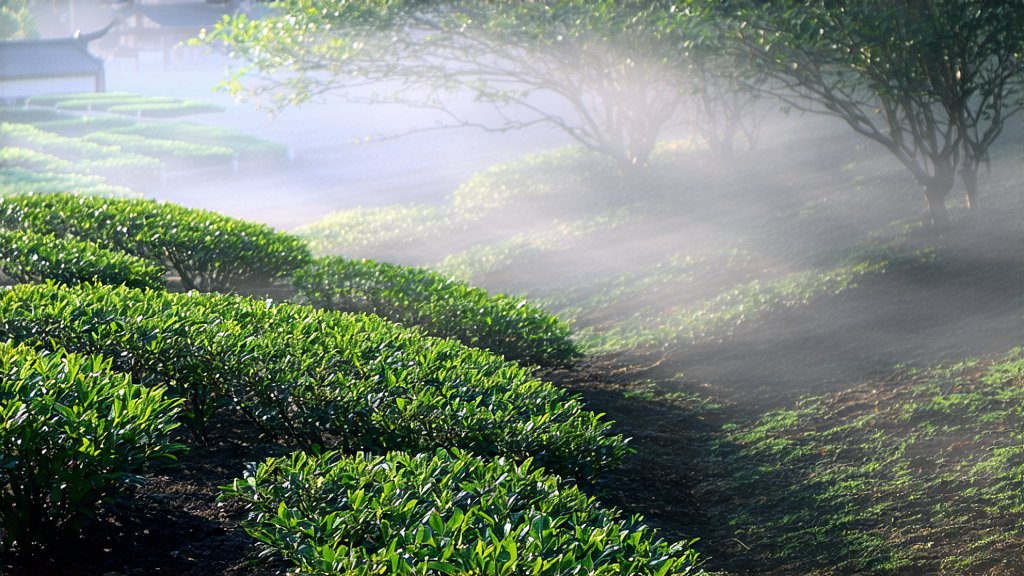
In the vast and diverse landscape of Chinese tea culture, few varieties captivate the senses and the imagination quite like Tieguanyin Oolong tea. This exquisite beverage, originating from the mountainous region of Anxi County in Fujian Province, China, has earned a revered place among tea enthusiasts worldwide for its unique flavor profile, rich history, and intricate production process. As a seasoned expert in the realm of Chinese tea, I am delighted to share with you the enchanting world of Tieguanyin, shedding light on its historical roots, varietals, meticulous craftsmanship, and the art of appreciating its unparalleled taste.
Historical Roots & Legendary Beginnings
The story of Tieguanyin is as captivating as its taste. According to legend, it was discovered by a poor scholar named Wei Yin during the Qing Dynasty (1644-1912). While studying for the imperial exams, Wei Yin stumbled upon a wild tea plant that grew between two rocks, resembling the shape of a Guanyin statue, the Bodhisattva of Compassion in Buddhism. Intrigued, he decided to cultivate these plants, naming them "Tieguanyin," which translates to "Iron Goddess of Mercy." Over time, this tea gained immense popularity, not only for its supposed healing properties but also for its extraordinary flavor and aroma, eventually earning the moniker "the King of Oolong Teas."
A Symphony of Varieties
Tieguanyin encompasses several distinct sub-varieties, each with its own unique characteristics shaped by factors such as altitude, soil composition, and cultivation practices. Among the most notable ones are:
-
Xiang Pian (Fragrant Variety): Known for its high floral notes and a sweet, orchid-like fragrance, Xiang Pian is often considered the quintessential representation of Tieguanyin's aromatic allure.
-
Dan Gui (Single Bush): Grown from ancient mother trees, Dan Gui is prized for its deep, complex flavors and exceptional aging potential. Each bush is carefully propagated to maintain the purity and authenticity of this rare variety.
-
Huang Jin Gui (Golden Osmanthus): This variety boasts a distinctive osmanthus flower aroma and a smooth, creamy texture, making it a favorite among connoisseurs seeking a refined and elegant cup.
Masterful Craftsmanship: The Art of Making Tieguanyin
The creation of Tieguanyin is an art form that requires precision, skill, and a deep understanding of nature's rhythms. Here's a glimpse into the traditional production process:
-
Plucking: Only the youngest leaves and buds are handpicked during dawn when the dew still clings to the plants, ensuring maximum freshness and vitality.
-
Withering: The freshly picked leaves undergo a gentle withering process, either indoors under controlled conditions or outdoors under the sun, to reduce moisture content and initiate oxidation.
-
Fixation: Also known as "kill green," this step involves briefly heating the leaves in a wok or steaming them to halt oxidation and fix their color.
-
Rolling: The fixed leaves are then rolled repeatedly to form tight spirals, a signature feature of Tieguanyin. This action helps to further release the tea's natural juices and enhance its aroma.
-
Oxidation: The rolled leaves are spread out to allow partial oxidation, striking a delicate balance between green and black tea characteristics.
-
Roasting & Drying: Finally, the leaves are roasted over charcoal fire to develop their rich, toasty undertones and remove any remaining moisture. This step also adds depth and complexity to the tea's flavor profile.
Savoring the Essence: The Gongfu Cha Ceremony
To truly appreciate the nuances of Tieguanyin, one must engage in the Gongfu Cha ceremony, a ritualistic practice that elevates tea drinking into an art form. Here’s how to embark on this sensory journey:
-
Preparation: Use a Yixing clay teapot or a Gaiwan (a lidded bowl used for brewing), along with small cups to capture the tea's full aroma. Rinse the teaware with boiling water to warm them up.
-
Infusion: Place about 5 grams of Tieguanyin into the teapot. Pour in hot water at around 90-95°C (194-203°F) for the first infusion, allowing it to steep for approximately 15 seconds. Subsequent infusions can be adjusted according to personal preference, gradually increasing steeping time while maintaining the same water temperature.
-
Appreciation: Observe the tea's transformation as it unfurls gracefully in water, releasing its golden liquor. Inhale deeply to capture the evolving aromas before taking your first sip. Let the tea coat your palate, paying attention to its multifaceted flavors—from floral and fruity notes to subtle earthiness and a lingering sweet aftertaste.
-
Multiple Infusions: Tieguanyin is renowned for its longevity; a single serving can yield multiple infusions, each revealing new layers of complexity. Enjoy the gradual shift in taste and aroma with each subsequent brew.
In conclusion, Tieguanyin Oolong tea stands as a testament to China's rich tea heritage, embodying centuries of tradition, innovation, and a profound connection to nature. Its captivating history, legendary beginnings, diverse varieties, meticulous craftsmanship, and the meditative experience of the Gongfu Cha ceremony make it a treasure worth discovering for any tea aficionado. So, next time you hold a cup of fragrant Tieguanyin, immerse yourself in its story, savor its flavors, and let it transport you to the misty mountains of Anxi County, where this iron goddess of mercy continues to weave her magic.